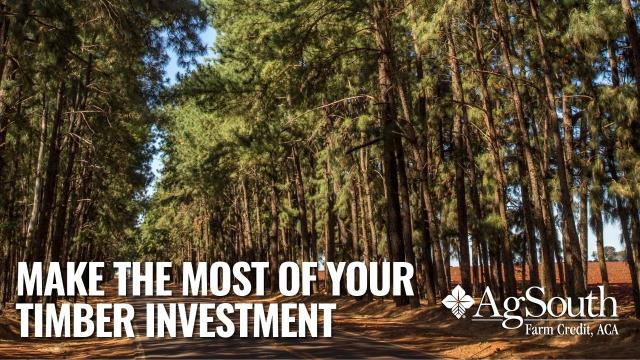Make the Most of Your Timber Investment

AgSouth Lead Appraiser and Forester Steve Grindley goes over 3 ways to ensure you're getting the most out of your timberland investment.
Key article takeaways:
- Take timber inventory with the help of a forester or other land professional
- Lay out your goals and objectives for the property
- Consult with forestry professionals, other landowners, and your financing team often
By Steve Grindley
AgSouth Lead Appraiser and Forester
For many first time timberland investors, the process of acquiring their property is generally the sole focus, but as with any investment, there are additional considerations which need to be explored. What are your goals and desires for the property and how do you go about achieving those? Who can help and how do you maximize your timber investment? Those are questions that we hear often from first time timberland investors. As with any investment, a detailed plan and reliance on professionals is an ideal way to accomplish goals.
Timber Management Plans
Timber management plans provide the landowner with a timeline of events for the property and detail estimated income and expenses, harvest scheduling, reforestation, and stand and tract improvement strategies. Typically, management plans are provided by a consulting forester or forestry professional in your local area.
To make the most of your investment, timberland owners should:
- Take timber inventory with the help of a forester or other professional
- Lay out your goals and objectives for the property
- Consult with forestry professionals, other landowners, and your financing team often
Take Timber Inventory
Proper timber management is the key to all management plans and needs to be a priority for the landowner, as timber is the main income source. The first step in timber management is to determine the current timber volume and value. Again, this is where a forester can assist by providing a timber inventory. Inventories are systematic in nature and provide information regarding the age, type, stocking levels and value of the existing timber of the property. Once this information is known, the full management plan can be developed and implemented.
What Are Your Goals?
These plans are created based on the land owners objectives. Those goals can be pure timberland management and timber production to pine straw production, recreation, aesthetics, and wildlife management. Typically, combinations of the above, as well as other goals as desired by the land owner are addressed with specific timelines for income generation. Income can allow for tract improvements, debt reduction, and can offset some, if not all of the expenses associated with timberland ownership. Passive income streams such as hunting leases and pine straw income allow are ideal when conditions are suitable and the property is available for leasing. However, the majority of first time timberland buyers are focused on recreation and timber production.
Seek Advice Often
Perhaps the best advice for maximizing your investment is to rely on the advice of forestry professionals, adjoining landowners, county landowner’s organizations as well as being an active participant in your property’s management. Never be afraid to seek advice and recommendations from your loan officer as they have typically dealt with numerous scenarios as it relates to timberland investing.
Forestry Landowner Resources
North Carolina Forestry Service
South Carolina Forestry Commission,
Questions?
For more information on how AgSouth can support your timber operation, one of our local loan officers would be more than happy to help.